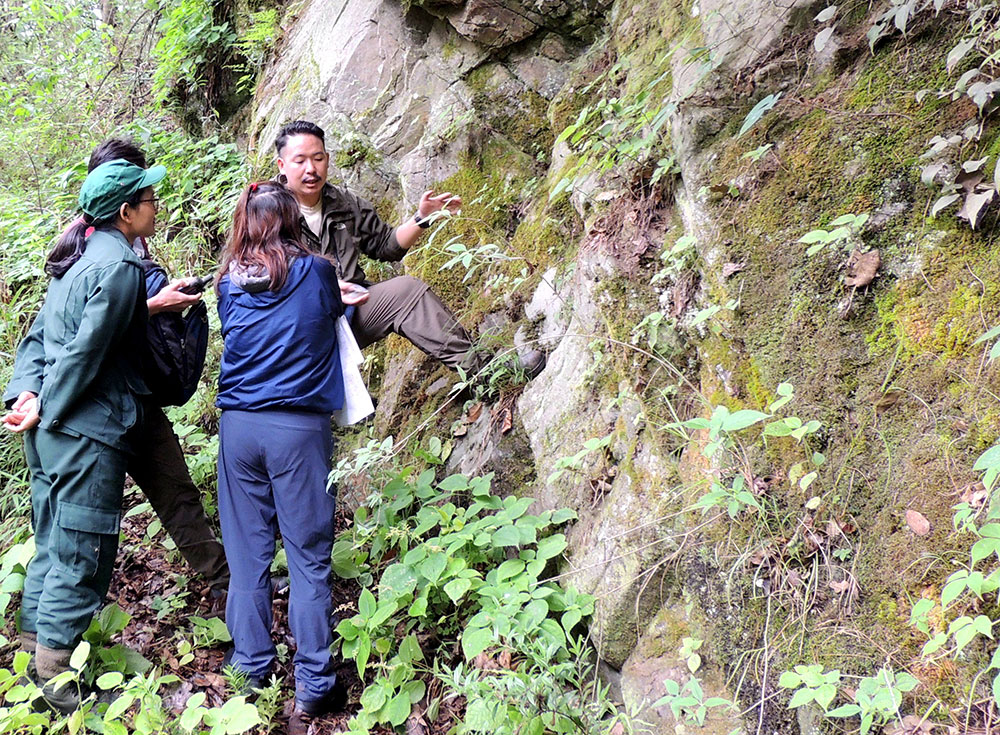Nima | Gelephu
The practice of addressing water problems through the protection of spring or groundwater discharge points, building reservoirs, and exploring alternate sources is unsustainable without managing groundwater recharge areas.
According to a study conducted by a lecturer from the College of Natural Resources (CNR) in Lobesa, Punakha, watershed management approaches in the country focused more on water discharge points (springs)
Local communities are not aware of the recharge areas that play a critical role in the health of spring water—a common source of water to the streams in the country.
A lecturer, Jambay, said that the current water management approach lacked springshed management practices that would ensure sustainable management of water resources and prolong drying up of spring water.
The main problem in most of the communities is the drying up of water sources but the intervention’s focus has been on water discharge points.
Traditional practices of growing banana trees in the recharge areas led to water sources drying up, according to the official.
“They were not aware of recharge areas. There are also no information and data regarding the recharge areas in the country,” he said. “The current practices have not solved the problem.”
The local communities continue to experience water shortage for drinking and irrigation purposes despite exploring new water sources and building bigger reservoirs—a common intervention applied today.
He added that the development activities that passed through recharge areas have also led to water sources drying up. “We have to mainly demarcate the recharge areas and protect those areas. Spring is the main source of streams, which then feeds most urban towns.”
The interventions should also focus on reviving and protecting drying spring water, according to the official.
Tarayana Foundation in collaboration with CNR started mapping spring water recharge areas in Tali, Zhemgang, and eight other dzongkhags as a part of the spring water revival project through springshed management practices.
The project identifies spring recharge areas with the help of hydrological analysis and promotes collaboration between knowledge-based institutions and non-government organisations for effective implementation.
The project involves local communities to make them aware of the recharge areas. There are also plans to engage people while coming up with interventions such as digging trenches in the recharge areas.
“We are trying to trap water from where it falls. Mountain as a whole can be a recharge area of the spring shed. We will study the nature and alignment of rocks. This would improve water flow to the groundwater,” said Jambay.
The project recently mapped spring water recharge areas in Tali, Zhemgang that experienced drinking and irrigation water for a long time despite having water taps and pipelines in place.
Way forward
The official involved in the project said that several big water projects, including the water flagship programme and gewogs investing millions to secure water for the communities could fail without integrating springshed management practices.
“The watershed concept and management framework have focused exclusively on surface water. More recent and holistic thinking requires an understanding of how groundwater impacts a stream, either through inflow or outflow,” according to the research.
Tali tshogpa, Leki Zamgmo, said that the project this time focused on research-based intervention. It was important to have a stable water source to prevent the waste of resources. We could know more about the need to secure recharge areas,” she said.
She added that the ongoing project could bring a long-term solution to the water shortage problem in the chiwog.
“It focused on the need to understand the direction of rocks. Springs are the main source of water and we need to manage its source,” said Leki Zangmo.
Jambay said that the water flagship program should also include springshed management approaches. If it were merged then the result would be great. There are facilities everywhere but the main problem is with the source,” he said.
He added that the collaboration between expert institution and NGOs were important to implement those plans. “But, research works are not given due importance. We should aspire to pursue research-based development,” said Jambay.
The recharge area mapping exercise was completed in selected sites of Chhukha, Haa, Thimphu, Paro, and Dagana, according to the officials from Tarayana Foundation.
The implementation of the recharge area protection and management activities is carried out under the project: “Living Landscapes: Securing High Conservation Values (HCVs) in Southwestern Bhutan”.
“This approach to water management would ensure a sustainable flow of water as an adaptation measure for climate change,” according to the press release from Tarayana Foundation.
Watershed Management Division under the Department of Forests and Park Services initiated this program in the country and helped build the capacity of stakeholders with technical support from ICIMOD.
Edited by Jigme Wangchuk


